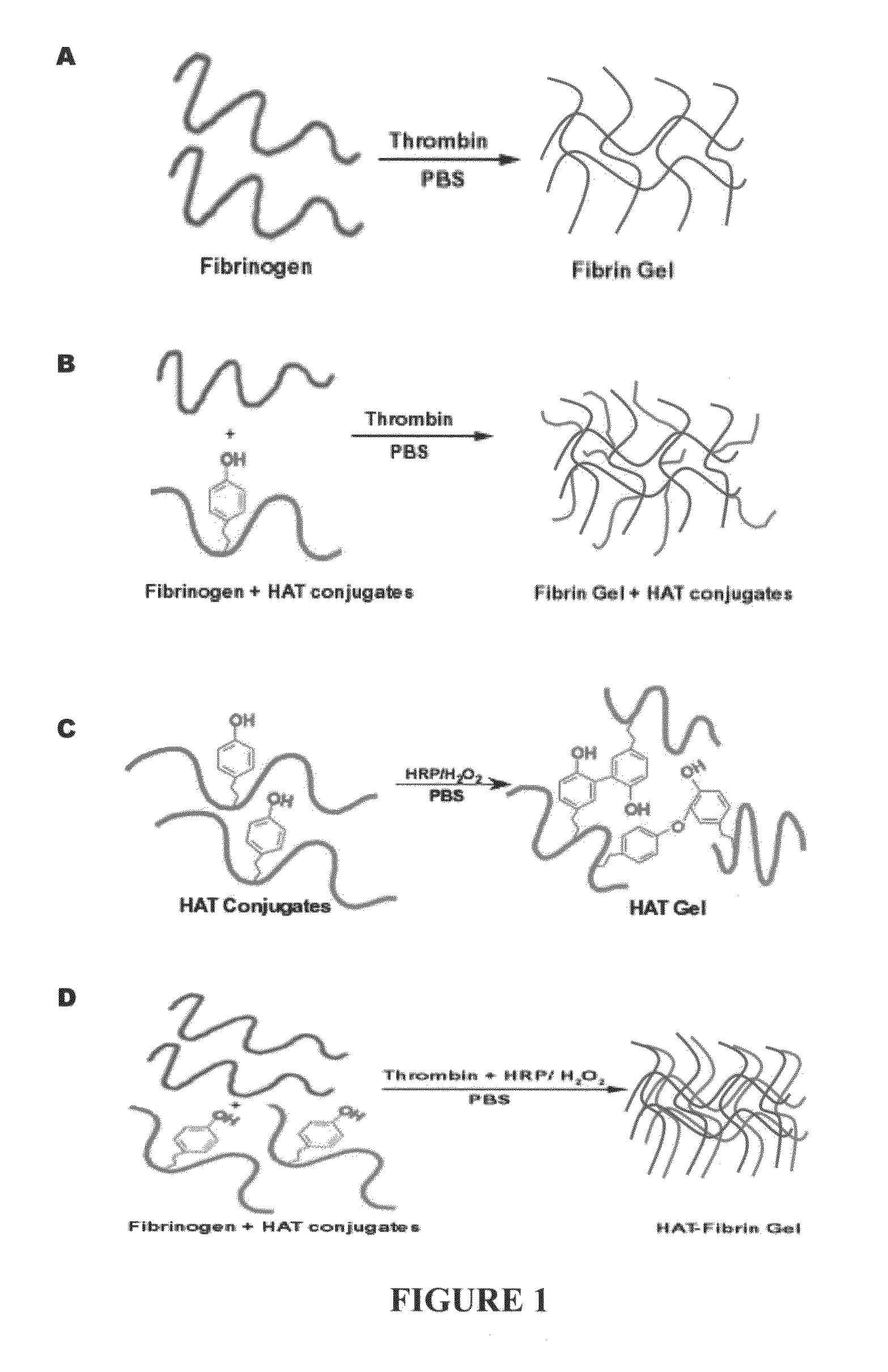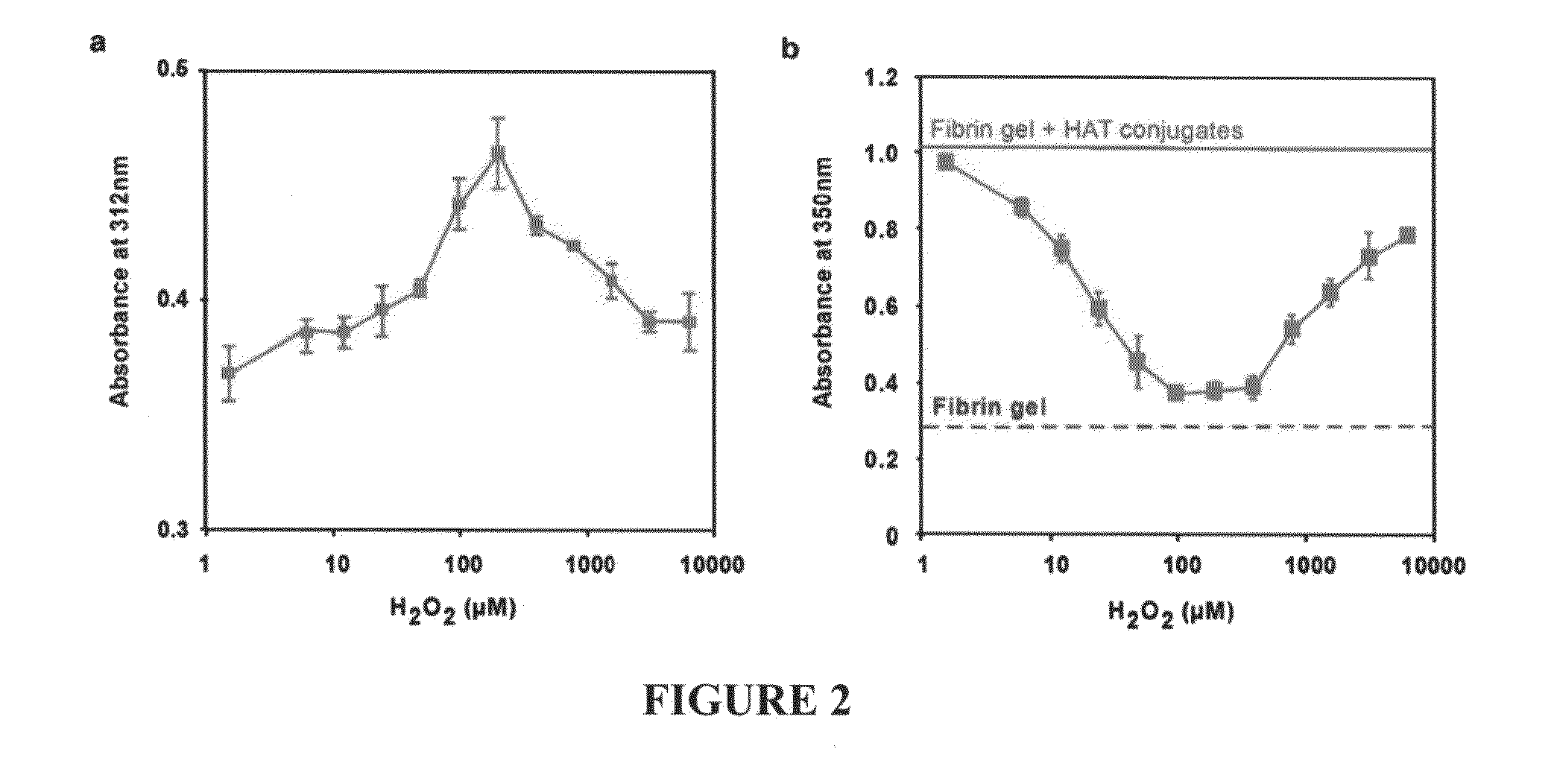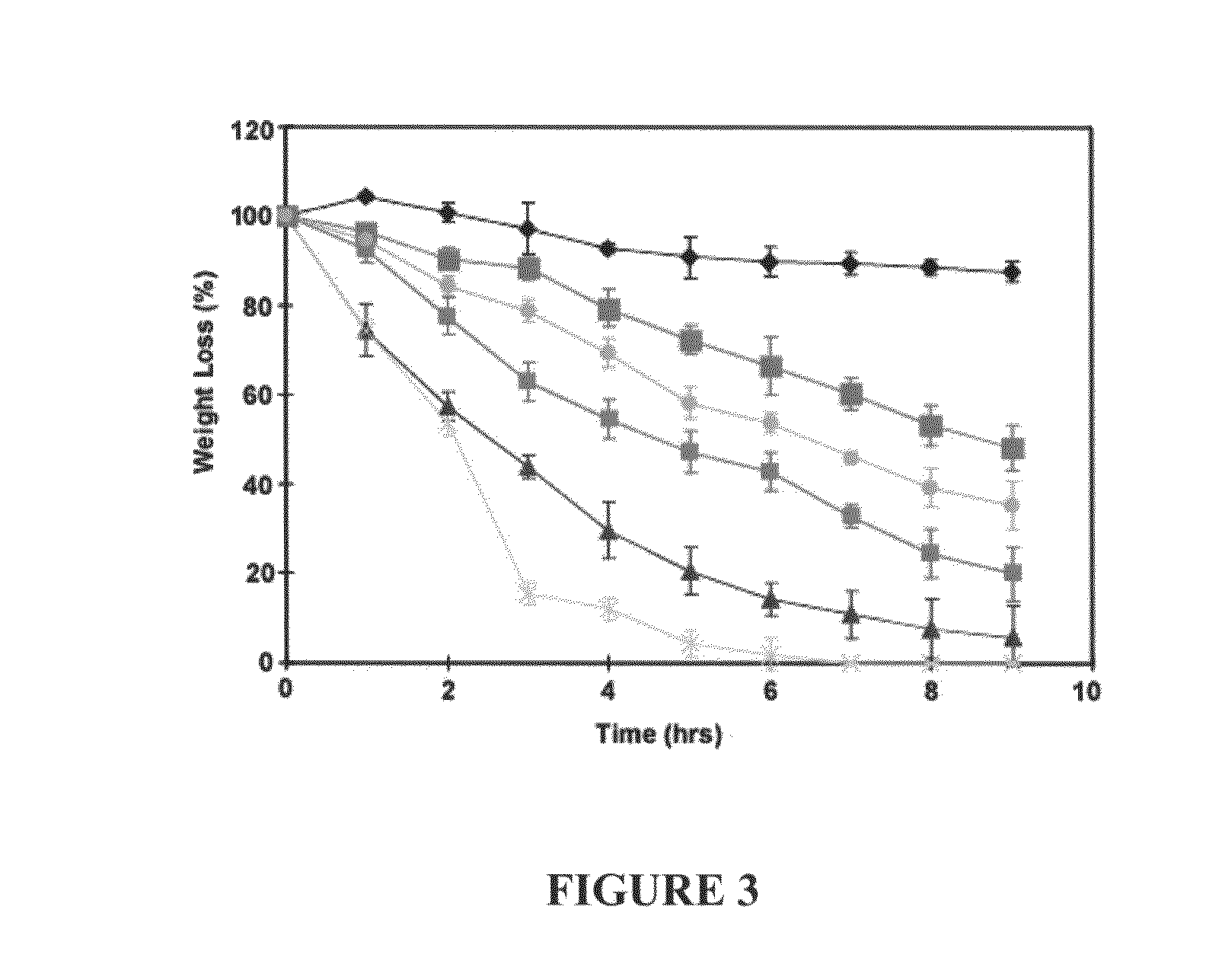Interpenetrating polymer network comprising fibrin
a polymer network and fibrin technology, applied in the field of hydrogel materials, can solve the problems of affecting growth and development, forming excessive or insufficient blood capillaries, and not being ideal treatment options
- Summary
- Abstract
- Description
- Claims
- Application Information
AI Technical Summary
Benefits of technology
Problems solved by technology
Method used
Image
Examples
example 1
[0092]Throughout this example, the following abbreviations are used. DMEM: Dulbecco's Modified Eagle Medium; EGM-2: Endothelial Cell Basal Media-2; FBS: fetal bovine serum; HAT or HA-Tyr: hyaluronic acid-tyramine conjugate; HFF1: human foreskin fibroblast; HRP: horse-radish peroxidase; HUVEC: human umbilical vein endothelial cells; PBS: phosphate buffered saline; PI: propidium iodide.
Materials and Methods
[0093]Materials. HA (90 KDa) was kindly donated by Chisso Corporation (Tokyo, Japan). Diethoxyethyl amine (DA), N-hydroxysuccinimide (NHS), 1-ethyl-3-(3-dimethylaminopropyl)-carbodiimide hydrochloride (EDC), tyramine hydrochloride, bovine plasma fibrinogen and bovine thrombin were from Sigma (Singapore). Horeseradish peroxidase was purchased from was from Wako Pure Chemical Industries (Japan). HUVEC and EGM-2 bullet kits were purchased from Lonza (Singapore). Cytodex 3 microcarrier beads were purchased from GE Healthcare.
[0094]Synthesis of HA-Tyr conjugates. HA-Tyr conjugates were s...
PUM
| Property | Measurement | Unit |
|---|---|---|
| concentration | aaaaa | aaaaa |
| concentration | aaaaa | aaaaa |
| pH | aaaaa | aaaaa |
Abstract
Description
Claims
Application Information
 Login to view more
Login to view more - R&D Engineer
- R&D Manager
- IP Professional
- Industry Leading Data Capabilities
- Powerful AI technology
- Patent DNA Extraction
Browse by: Latest US Patents, China's latest patents, Technical Efficacy Thesaurus, Application Domain, Technology Topic.
© 2024 PatSnap. All rights reserved.Legal|Privacy policy|Modern Slavery Act Transparency Statement|Sitemap



